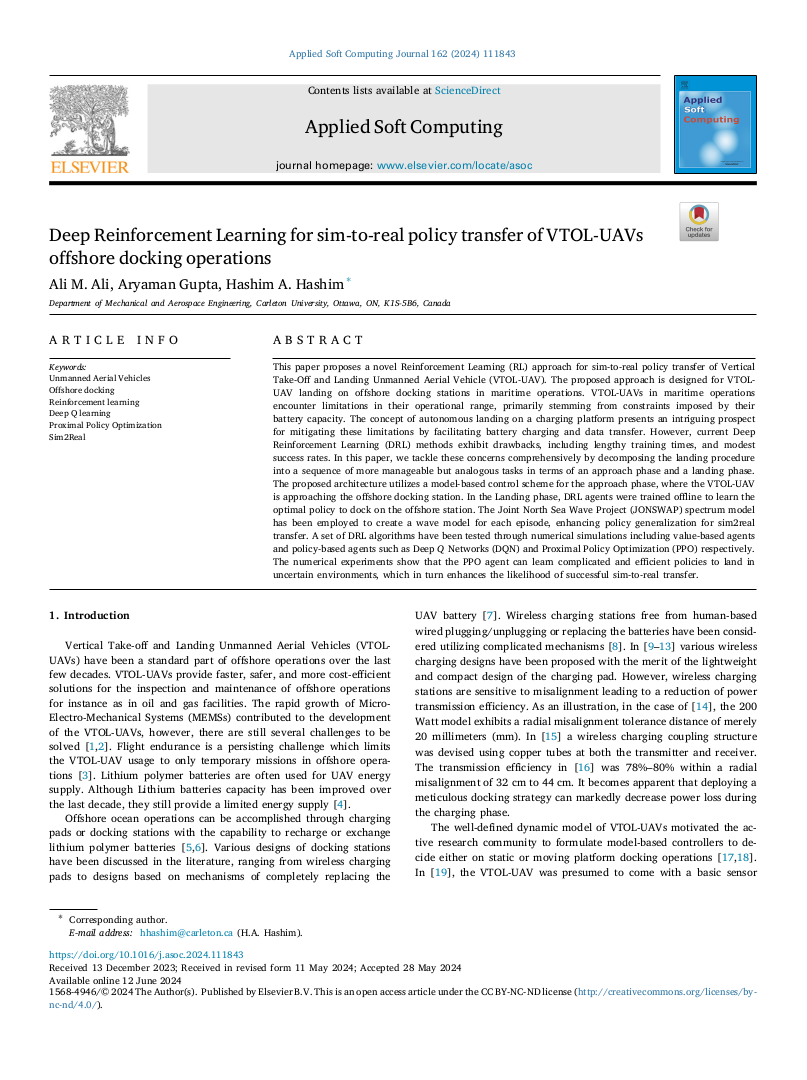
Deep Reinforcement Learning for sim-to-real policy transfer of VTOL-UAVs offshore docking operations
|
|
|
|
|
|
 |
Ali, Gupta, Hashim Deep Reinforcement Learning for sim-to-real policy transfer of VTOL-UAVs offshore docking operations |
|
|